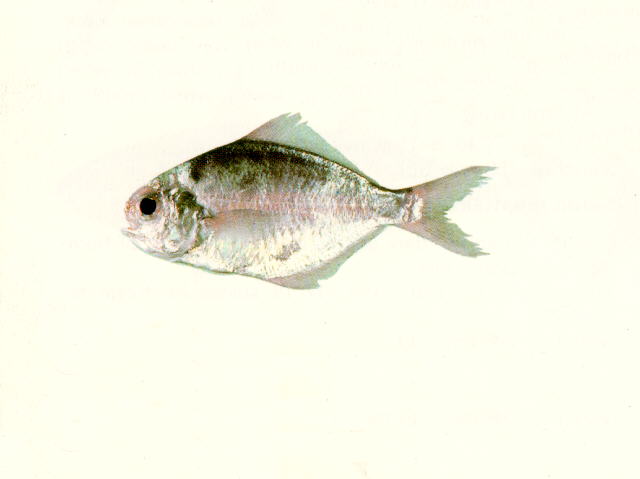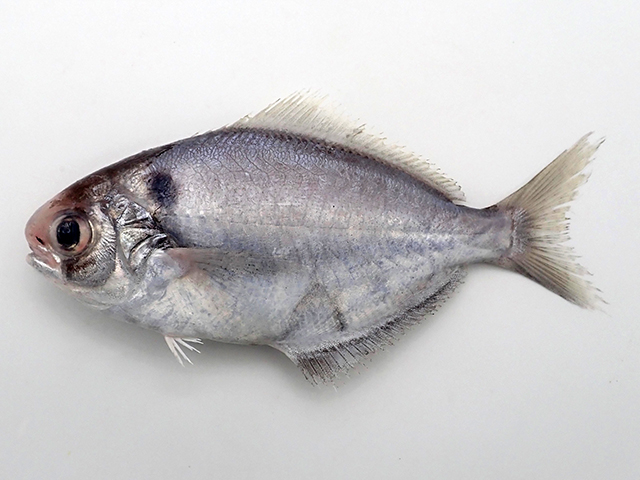Psenopsis
anomala
(Temminck &
Schlegel,
1844)
Pacific rudderfish
View all media / Upload your photos and videos
Expand all
Classification / Names
Teleostei (teleosts) > Scombriformes (Mackerels) >
Centrolophidae (Medusafishes)
Etymology: Psenopsis: Greek, psenos, -e, -on = without hair + Greek, opsis = appearance (Ref. 45335).
More on authors:
Temminck &
Schlegel.
Environment / milieu / depth range / climate zone / distribution range
Distribution
Western Pacific: Japan and the East China Sea. Reported from Hong Kong (Ref. 12083).
Maps

Psenopsis anomala / Native range
AquaMaps Data sources:
GBIF
OBIS
This map was computer-generated and has not yet been reviewed.

Psenopsis anomala / Suitable habitat
AquaMaps Data sources:
GBIF
OBIS
This map was computer-generated and has not yet been reviewed.

Psenopsis anomala / Point map
AquaMaps Data sources:
GBIF
OBIS
This map was computer-generated and has not yet been reviewed.

Psenopsis anomala / Year 2050
AquaMaps Data sources:
GBIF
OBIS
This map was computer-generated and has not yet been reviewed.
Length at first maturity / Size / Weight / Age
Short description
Biology
Main reference
Bykov, V.P. 1983 Marine Fishes: Chemical composition and processing properties. New Delhi: Amerind Publishing Co. Pvt. Ltd. 322 p. (Ref. 4883)
IUCN Red List Status (Ref. 125652)
Least Concern (LC); date assessed: January 29 2009
CITES (Ref. 123416)
Not Evaluated
CMS (Ref. 116361)
Not Evaluated
Threat to humans
Harmless
More information
- Countries
- FAO areas
- Ecosystems
- Occurrences
- Introductions
- Stocks
- Ecology
- Diet
- Food items
- Food consumption
- Ration
- Common names
- Synonyms
- Metabolism
- Predators
- Ecotoxicology
- Reproduction
- Maturity
- Spawning
- Spawning aggregation
- Fecundity
- Eggs
- Egg development
- Age/Size
- Growth
- Length-weight
- Length-length
- Length-frequencies
- Morphometrics
- Morphology
- Larvae
- Larval dynamics
- Recruitment
- Abundance
- References
- Aquaculture
- Aquaculture profile
- Strains
- Genetics
- Allele frequencies
- Heritability
- Diseases
- Processing
- Mass conversion
- Vision
- Pictures
- Stamps, Coins Misc.
- Sounds
- Ciguatera
- Speed
- Swim. type
- Gill area
- Otoliths
- Brains
Estimates based on models
Preferred temperature (Ref. 123201): 11.1 - 23.2, mean 18.4 °C (based on 218 cells).
Phylogenetic diversity index (Ref. 82804): PD50 = 0.5156 [Uniqueness, from 0.5 = low to 2.0 = high].
Bayesian length-weight: a=0.01413 (0.00860 - 0.02321), b=3.07 (2.93 - 3.21), in cm total length, based on LWR estimates for this species & (Sub)family-body (Ref. 93245).
Trophic level (Ref. 69278): 4.0 ±0.3 se; Based on food items.
Resilience (Ref. 120179): Medium, minimum population doubling time 1.4 - 4.4 years (Assuming tm=1).
Prior r = 0.49, 95% CL = 0.32 - 0.73, Based on 1 data-limited stock assessment.
Fishing vulnerability (Ref. 59153): Low to moderate vulnerability (27 of 100).
Climate vulnerability (Ref. 125649): Moderate to high vulnerability (47 of 100).
Price category (Ref. 80766): Very high; Reliable: based on ex-vessel price for this species.
Nutrients (Ref. 124155): Calcium = 110 [63, 258] mg/100g; Iron = 1.09 [0.59, 1.92] mg/100g; Protein = 17.3 [15.5, 19.2] %; Omega3 = 0.231 [0.119, 0.434] g/100g; Selenium = 87 [40, 201] μg/100g; VitaminA = 26.7 [8.1, 99.1] μg/100g; Zinc = 0.935 [0.613, 1.413] mg/100g (wet weight); based on nutrient studies.


